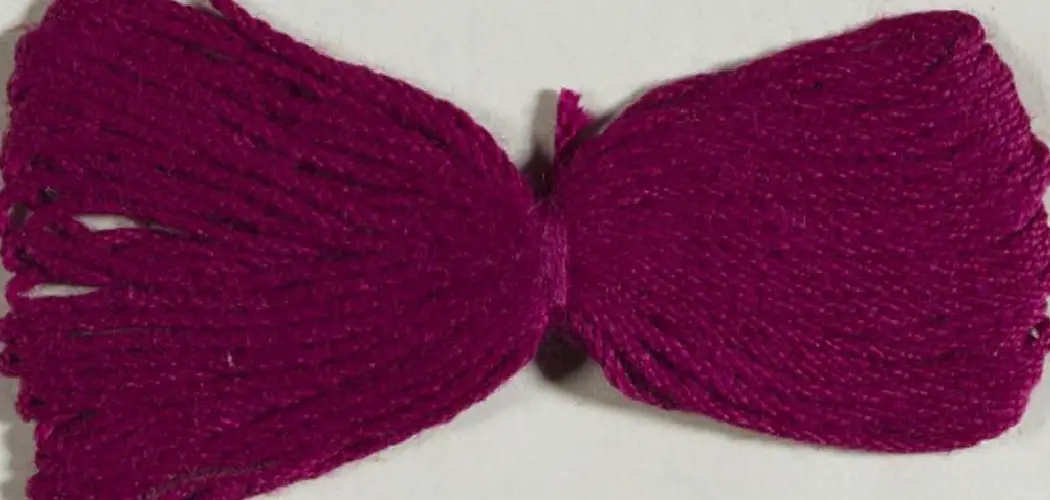Are you looking for something special to add a unique touch to your next craft project? With just a few basic materials and some simple techniques, you can easily learn how to make a beautiful bow that will instantly upgrade any fabric-based gift or décor item.
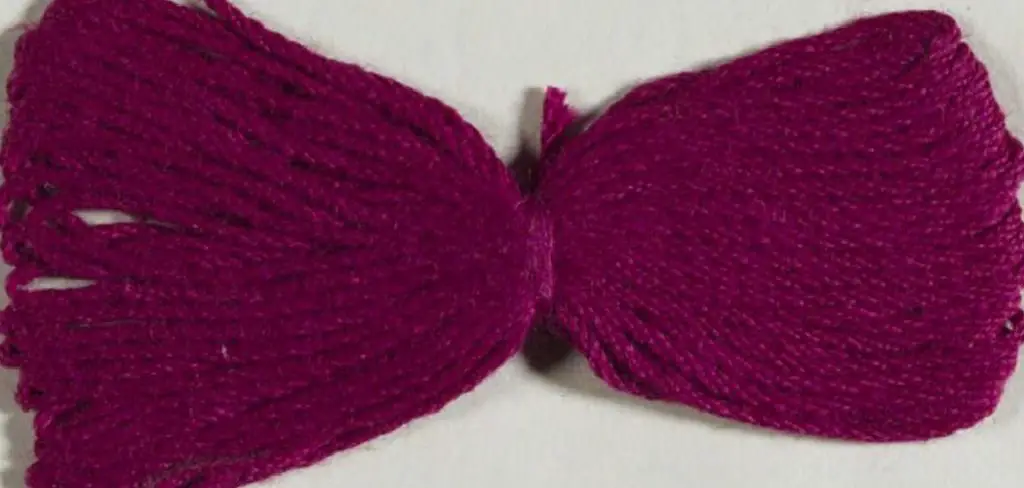
In this blog post, we’ll provide an overview of how to knit a bow to take in order to knit yourself a stylish bow. So if you’re looking for a fun way to customize clothing, blankets, bags, and more—keep reading for all the details!
What Is a Finger Bow?
A finger bow is a type of one-handed archery technique where the bow is held in the fingers rather than in the palm. It is considered to be more challenging than other styles, as it requires more dexterity and accuracy from the shooter. The technique has been used since ancient times and continues to be popular among traditional archers today.
The main advantage of a finger bow is that it allows for greater accuracy and flexibility when shooting. The shooter has much more control over the shot, as well as an improved feel for their draw weight. It also requires less strength to keep the bow steady and makes aiming easier. On the other hand, using a finger bow can be difficult for beginners as it takes longer to learn and can cause more fatigue.
You Can Check It Out To Knit a Snowman
8 Methods How to Knit a Bow
1. Choose the Right Yarn
The first step in learning how to knit a bow is to choose the right yarn. You’ll want to use a yarn that is soft and not too slippery. A good choice for beginners is a worsted-weight yarn. It’s easier to work with than thinner yarns, and the finished bow will be a nice size. If you’d like to work with a thinner yarn, make sure you use larger needles, so the stitches don’t get too tight.
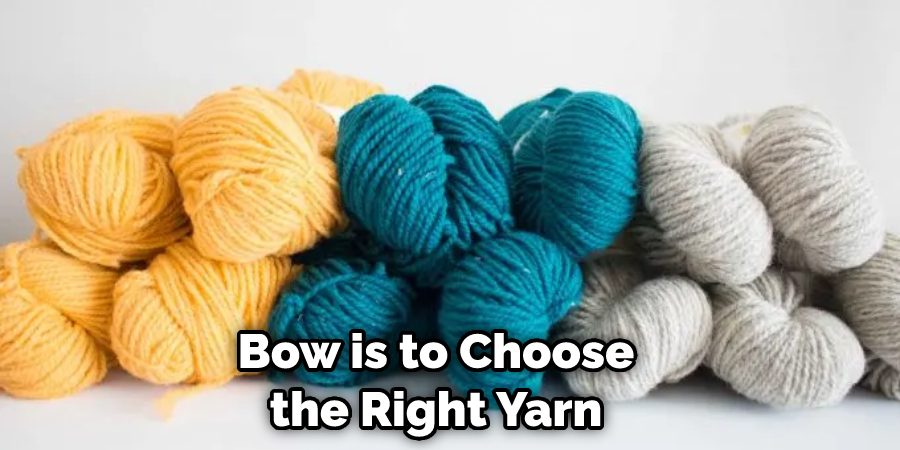
While the type of yarn is up to you, you should opt for a light-colored yarn. This will make it easier to see the stitches and make counting easier.
2. Cast On the Stitches
Once you’ve chosen your yarn, you’ll need to cast on the appropriate number of stitches. For a small bow, you’ll need to cast on eight stitches. For a medium bow, you’ll need to cast on ten stitches. And for a large bow, you’ll need to cast on 12 stitches. If you’re using a circular knitting needle, you’ll need to cast on the stitches as if you were using straight needles. Although, the stitches will be joined together when you’ve finished casting on.
3. Knit the First Row
After you’ve cast on the appropriate number of stitches, you’ll need to knit the first row. To do this, simply insert the needle into the first stitch, wrap the yarn around the needle, and then pull the needle through the stitch.
Repeat this process until you’ve reached the end of the row. If you’re new to knitting, you might want to use a row counter to help you keep track of your progress. Once you’ve knitted the first row, you can move on to the next step. However, make sure to check your work and count the stitches first.
4. Purl the Second Row
Once you’ve completed the first row, you’ll need to purl the second row. To do this, insert the needle into the first stitch from behind, wrap the yarn around the needle, and then pull the needle through the stitch.
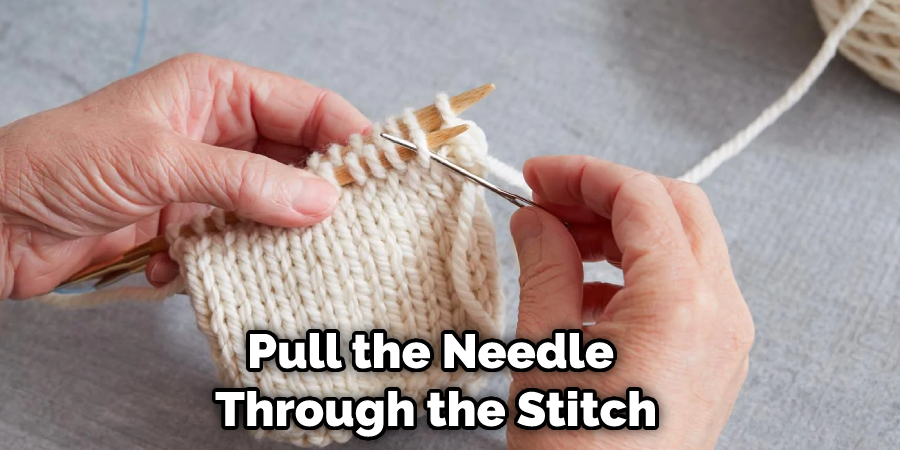
If you need help, refer to our guide on how to purl a stitch. When you’ve finished the row, turn your work around so that the wrong side is facing you. You will now be ready to begin the third row. However, if you’re working in a garter stitch, skip to the fourth row.
5. Knit the Third Row
After you’ve completed the second row, you’ll need to knit the third row. This row is identical to the first row; simply insert the needle into each stitch and wrap the yarn around before pulling through. If you’re using a pattern, be sure to follow the specific instructions provided.
When you’ve knitted all of the stitches in the row, turn your work so that the wrong side is facing you. Repeat these steps until your piece is as long as you’d like it to be. Although knitting can seem complicated at first, with practice and patience, you can create beautiful pieces of clothing or accessories. Have fun experimenting with different patterns and colors!
6. Purl The Fourth Row
The fourth row is also identical to the second row; simply insert the needle into each stitch from behind and wrap the yarn around before pulling through. While the previous rows feature the same number of stitches, this row has one extra that gives the fabric its stretch and weight. To create this stitch, insert the needle in the second stitch from the left, wrap the yarn, and pull through before slipping the stitch off the needle.
Then insert it into the next stitch and repeat the process. Continue until all stitches are completed.
7. Bind Off The Stitches
Once you’ve completed all four rows, it’s time to bind off your stitches. To do this, simply insert your needle into two stitches at a time and then pull one over the top of the other before slipping it off of the needle. Continue until you have only one stitch remaining on your needle; then cut your yarn and pull it through that final stitch to secure it.
While binding off is a relatively simple process, it’s important to make sure that you don’t pull the stitches too tightly, or your work will be unable to stretch and move. Bind off all of your stitches, and you’re finished with the four-row garter stitch!
8 . Weave in The Ends
Now that your bow is complete, you’ll need to weave in any loose ends before it can be worn or used as decoration. To do this, simply thread a tapestry needle with your yarn tail and then weave it in and out of the nearby stitches; be sure not to pull too tightly, or your bow will become misshapen!
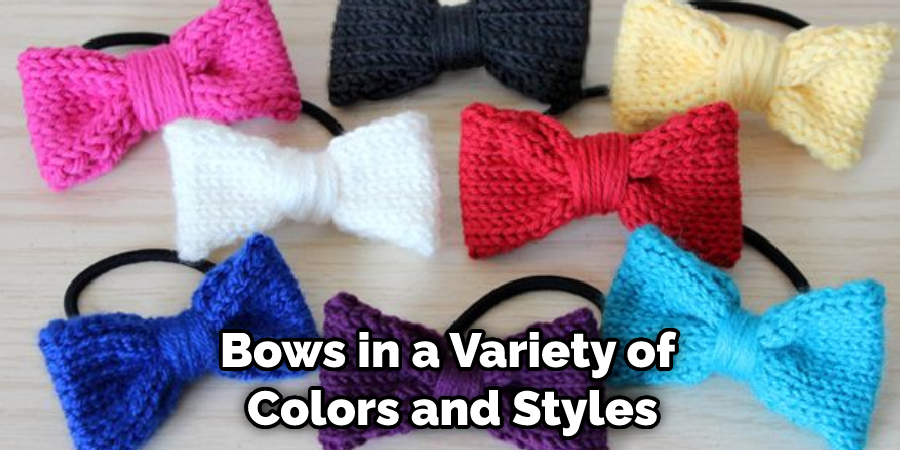
Once you’re satisfied with your work, snip off any excess yarn, and your bow is ready to go! Make sure to give it a good spritz of water and let it dry completely before using. With a bit of practice, you’ll be able to craft beautiful bows in a variety of colors and styles. Have fun!
By following these steps, you should now know how to make a four-row garter stitch. With practice, you can create beautiful pieces of clothing or decorations. Keep experimenting with different patterns and colors, and have fun!
Things to Consider When Knitting a Bow
1. Choose an Appropriate Yarn for the Project:
The choice of yarn you use to knit a bow will depend on the size and shape of the bow, as well as its intended purpose. Consider the thickness of the yarn, its texture, its color, and how it holds up when stretched or manipulated.
2. Get the Right Needles:
The needles you use to knit a bow should be appropriate for the yarn and type of project. If you’re using a thicker yarn, a larger-sized needle may be necessary. For finer yarns, use smaller needles.
3. Keep the Stitches Tidy:
When knitting a bow, it’s important to keep your stitches neat and even so that the shape of the bow is consistent when completed. Take your time while knitting and pay attention to each stitch as you make them.
4. Use Patterned or Textured Yarns:
Adding texture or pattern to your bows can add an extra dimension of interest to any project. Consider using self-striping yarns or novelty fibers like eyelash yarn for a unique look. You could also vary the stitch patterns used in each section of the bow for extra depth.
5. Get Creative With Finishing Touches:
Finally, consider adding some finishing touches to your bow. You could add small buttons or beads as embellishments or make a matching yarn tassel for the center of the bow. There are lots of possibilities when it comes to customizing your bows!
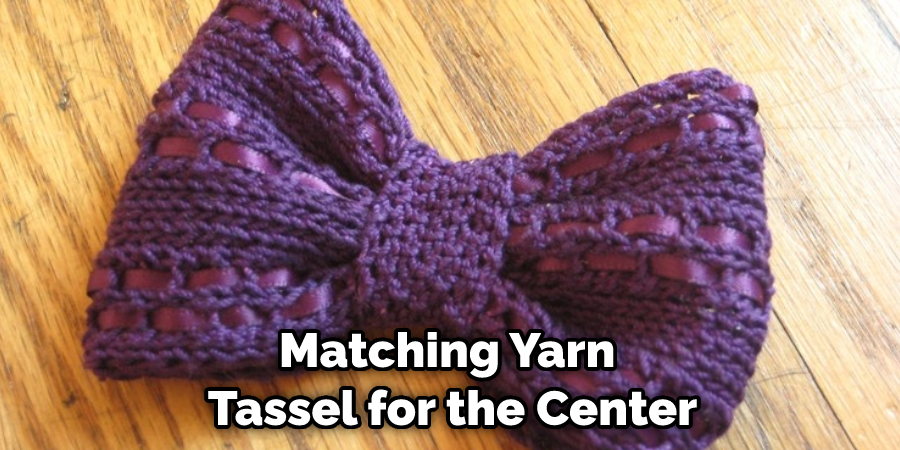
6. Practice and Have Fun:
Remember that perfection isn’t necessary when it comes to crafting a bow. The most important thing is to practice and have fun while trying out different yarns, needles, and stitches. With a bit of practice, your bows will be perfect in no time!
You Can Check It Out to Pick Up Wrapped Stitches
Conclusion
Now that you know how to knit a bow, you can add this finishing touch to all sorts of projects! Try adding a bow to a knit hat or scarf, or even stitch a few onto a baby blanket. The possibilities are endless. And once you get the hang of it, knitting bows is actually quite fun and relaxing. So grab your needles and yarn and give it a try!
You Can Check It Out To Make an Origami Crown

